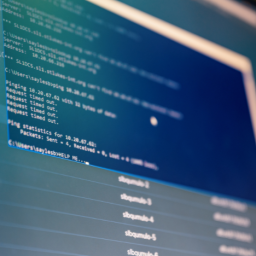
SUNRISE CRITICAL INFRASTRUCTURE SERIES
AI Balances: How the EU AI Act is Redefining Tech Norms. The Balance of Innovation and Regulation in Europe.
The AI Act is a crafted set of rules governing the use of Artificial Intelligence (AI) across all EU countries. Personally, I do not believe that it is something coming out of nowhere, as some people may believe. The reason is that we are talking about the EU. The commission almost always comes with specific regulations, especially in the tech sector. The AI Act is enforceable across the EU area, unlike directives, which need to be fine-tuned and integrated into each country’s laws. It’s worth mentioning that directives outline required outcomes but leave Member States free to decide how to transpose them into national laws. This new pioneering law, similar to the earlier GDPR, sets a standard for AI regulation, focusing on a risk-based approach. This means that AI systems are categorized according to their potential harm, with stricter rules for higher-risk systems. The regulation aims not to hinder innovation but to ensure its safe and ethical implementation. It conveys a clear message that not all innovations are beneficial without proper oversight.
To foster innovation, the framework includes:
- “AI regulatory sandboxes” for safe AI experimentation. Participation in these sandboxes is voluntary, but it is encouraged. There is a free priority access for SMEs and start-ups in case they are eligible. This is important because those companies that participate in the sandboxes, (especially SMEs and start-ups), will also benefit from specific guidance on the implementation of the Act.
- The AI act strengthens anti-discrimination laws by ensuring AI is designed and developed with high-quality data and with selected testing configurations to prevent possible biased outcomes.
- Support for small and medium-sized businesses and start-ups to help them navigate the rules without too much cost.
In the document there’s referenced a specific option (Option 3+) that:
- Follows a balanced, risk-based approach.
- Suggests voluntary codes of conduct for AI systems not considered high-risk.
The target of this option is to keep the compliance costs low, encouraging more companies to adopt AI without financial strain.
Navigating the complex trade-off between innovation and regulation, the EU’s AI framework can be seen as a well-intentioned attempt, with its own challenges and potential obstacles.
On one hand, all these regulations are like a detailed drawn map, guiding the AI landscape on ethical dilemmas and safety concerns. They provide guidance, with the guaranty that AI will be applied under a logical and ethical context and won’t be misused with having in mind as the only target the exploitation. In this context, the AI regulatory sandboxes appear to be particularly promising. They can act as some controlled playgrounds where the seeds of possible future technologies can be planted in a safe way.
However, there’s a flip side to consider. The very threads intended to strengthen the tapestry of AI development could, if pulled too tightly, constrain the creative freedom necessary for ground-breaking innovation.
Many may believe that the AI Act will have both positive and negative consequences and I also agree with that. One big question is how the EU will compete for example US in innovation? The AI act could possibly slow down processes and innovation due to the possible bureaucracy it may bring with it. Strict guidelines, while necessary for safety and ethical assurance, might inadvertently act as a straitjacket, stifling the spontaneity and risk-taking that often fuel technological breakthroughs.
An example is that let’s say that you have a nice idea and begin working on your new AI product. Until you get a review and validation for it from EU, another company in the US can come up with a similar idea and get it into the market much faster than you.
For small-scale innovators and start-ups, these regulations are a double-edged sword. While they offer guidance and safe testing grounds, there’s an underlying concern: Could the administrative burden and the need to navigate complex regulatory landscapes dampen the fiery spirit of entrepreneurship? The challenge lies in striking a delicate balance between the freedom to innovate and the necessity to regulate.
While these regulations aim to act as a lighthouse, guiding the AI ship away from potential dangers, there’s an underlying worry that they might also dim the lights of innovation. The hope and my personal view, however, remains that with careful implementation and a willingness to adapt, these regulations will not only safeguard against the risks of AI but also foster an environment where innovation can thrive within well-defined boundaries. The happy case scenario will be the one where caution and creativity coexist in a harmonious equilibrium.
Written by: Stavros Theocharis, Squaredev BV
Link to the full article: AI Balances: How the EU AI Act is Redefining Tech Norms | by Stavros Theocharis | DataDrivenInvestor
















